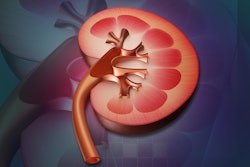More in Home
‘Dark-light-dark sign’ on MRI predicts rectal cancer metastasis
December 23, 2025
CT-based model assesses lung lesions from nonsolid nodules
December 23, 2025
MRI reveals how statins reduce vessel wall inflammation
December 23, 2025
New PET tracer helps detect pulmonary sarcoidosis
December 22, 2025
Transarterial embolization, cryoablation treat larger renal masses
December 22, 2025
Brain imaging, billing, radiation exposure top 2025's most-read list
December 22, 2025
PET/CT detects bone involvement in patients with lymphoma
December 19, 2025
Insurer benchmark used for NSA disputes lower than in-network rate
December 19, 2025
Is 7-tesla MRI poised for routine clinical integration?
December 19, 2025
Dark-field radiography improves detection of pneumothorax
December 18, 2025
Page 1 of 192
Next Page
















